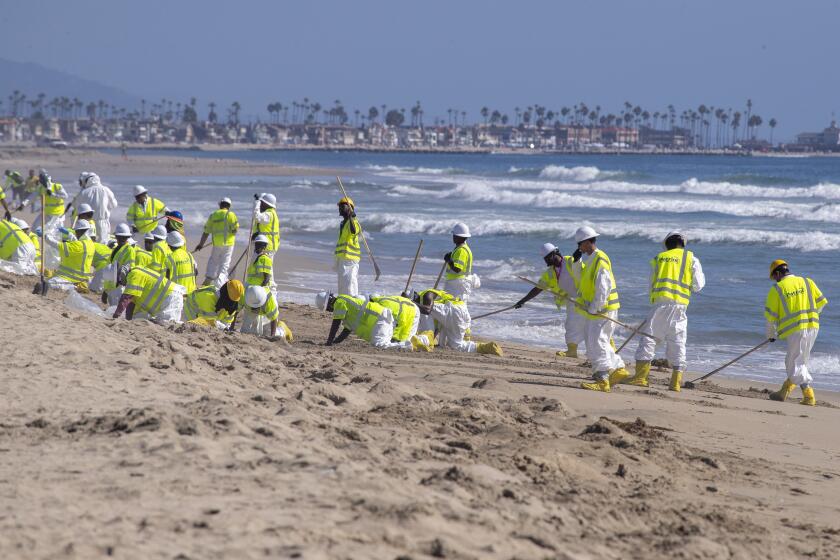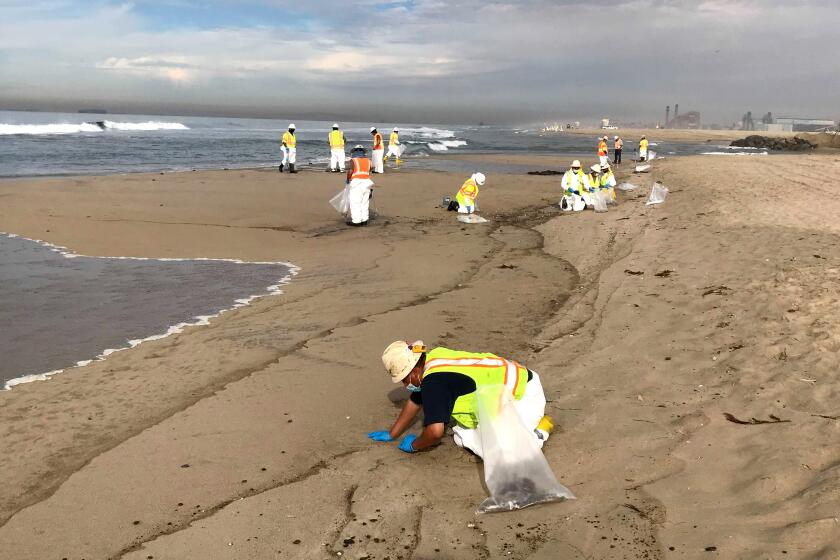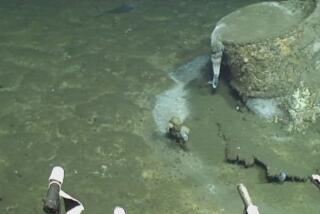Did a wayward ship anchor cause Orange County oil spill? Here’s what we know

The spill reaches Dana Point, and Baby Beach is closed. The greatest threat to the shore remains in the area between Huntington Beach and Laguna Beach.
- Share via
The offshore waters along the Orange and Los Angeles county coasts are teeming with cargo ships, creating a traffic jam into the ports of Los Angeles and Long Beach that has kept dozens of vessels idling as they wait to get in.
Did an anchor from one of those ships strike an underwater oil pipe, causing a massive spill of tens of thousands of gallons of crude?
That possibility is what the U.S. Coast Guard is now investigating as it tries to determine what led to the spillage of up to 144,000 gallons of oil that began flowing into the ocean Friday.
A massive oil spill off the Orange County coast has fouled beaches and killed birds and marine life
The spill, which wasn’t reported until Saturday morning, originated from a pipeline running from the Port of Long Beach to an offshore oil platform known as Elly.
During the pandemic, Southern California waters have seen repeated gridlocks as dozens of container ships wait to get into the ports. It was unclear, however, how close those ships have been to the offshore oil systems.
What do we know about the investigation?
A source familiar with the probe told The Times that the Coast Guard is investigating whether a large commercial ship set anchor in the wrong location, damaging an oil pipeline that moves crude from a platform eight miles offshore to a refinery on land.
The anchor dragged the pipeline as much as 150 feet, said the source, who spoke on the condition of anonymity because they weren’t authorized to speak publicly.
Vessels are given anchor points in order to avoid pipelines. Coast Guard investigators are examining whether the ship’s captain was aware of the dragging.
It is one of several elements of the investigation, and the source said no determinations have yet been made.
The Coast Guard is also investigating whether the oil company that manages the platform and pipeline failed to notice a drop of pressure in the pipeline, resulting in a delayed response that allowed oil to flow unfettered for hours, a high-ranking federal official told The Times.
That investigation is being handled as a potential negligence issue by Coast Guard criminal investigators, who operate separately from officials involved in the cleanup, said the federal official, who was not authorized to speak publicly about the ongoing inquiry.
Divers examining the 17.7-mile pipeline found it had been displaced by about 105 feet and had suffered a 13-inch split running parallel to the pipe.
What is the company saying?
Martyn Willsher, president and chief executive of Amplify Energy Corp. — the pipeline operator’s parent company — said Monday that a ship’s anchor striking the pipeline was “one of the distinct possibilities” for the spill.
“We have examined more than 8,000 feet of pipe, and we have isolated one specific area of significant interest,” Willsher told reporters. “There’s more information to come, but I think we’re moving very closely to the source and the cause of this incident.”
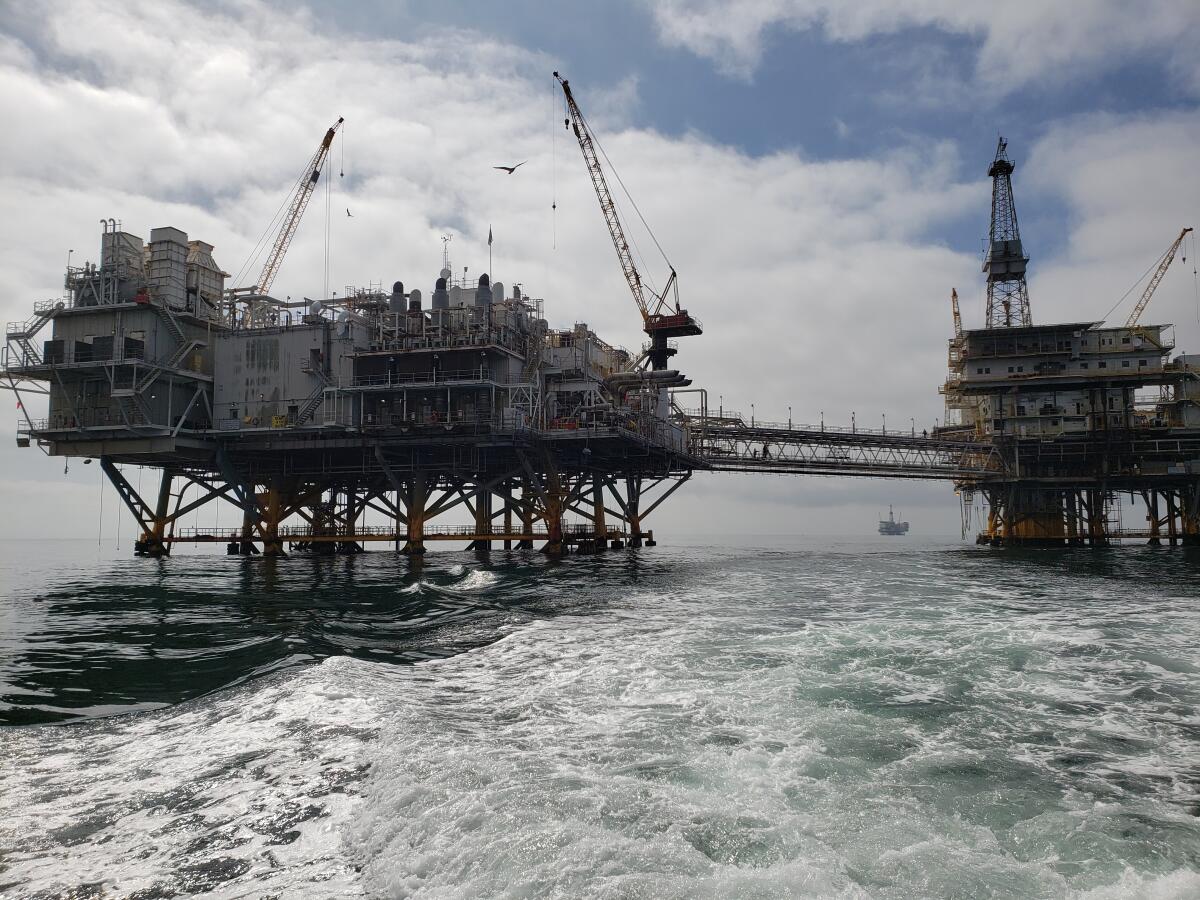
How does shipping traffic work?
The Marine Exchange of Southern California functions like air-traffic control at an airport, directing cargo ships to anchor at designated locations in San Pedro Bay, said James Fawcett, an adjunct professor of environmental studies at USC and director of marine science and policy outreach for the Sea Grant Program.
“The ships that anchor out there are required to anchor in the spot as designated,” Fawcett said.
Each anchorage is mapped with a circle around it so that the ship has enough space to swing around in the wind, he said.
“The captain of the cargo ship knows where to go, and in San Pedro Bay, knows which anchorage he’s headed for, and they navigate to it,” Fawcett said. “The anchor is supposed to go down in the center of the anchorage. And then the ship will pay out [its] anchor chain.”
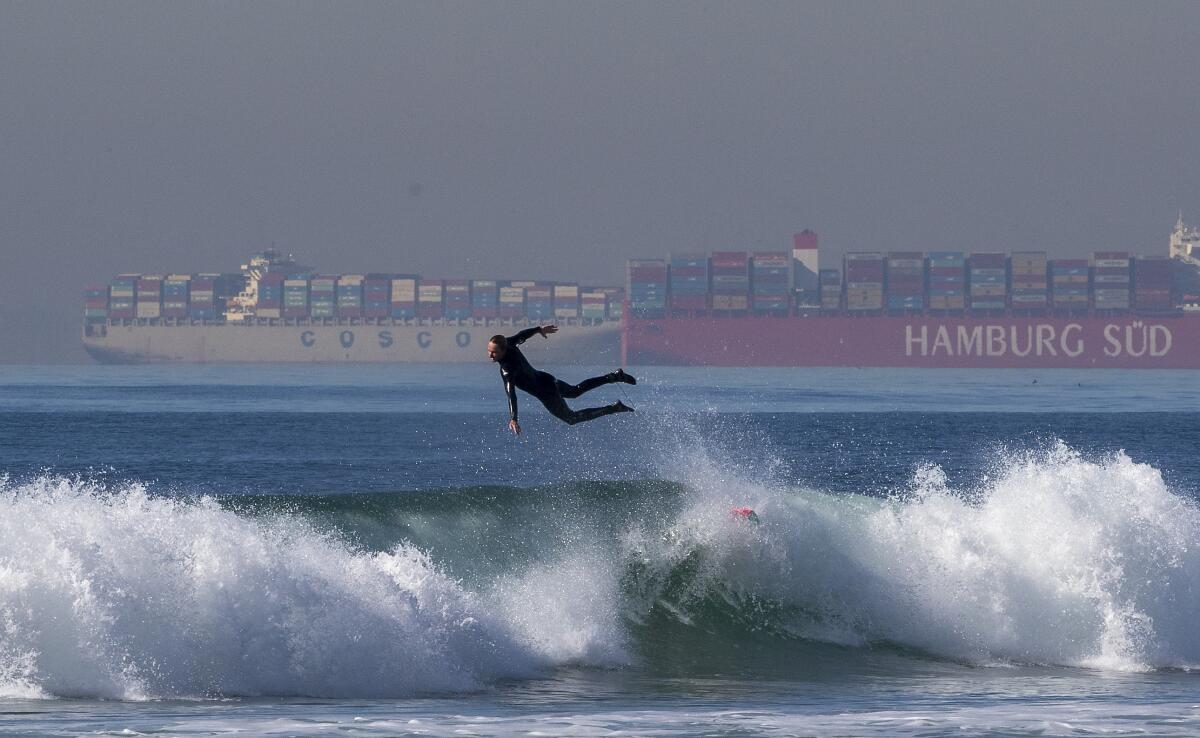
What do we know about anchoring?
One way that an anchor can end up dragging is if strong wind pushes a ship off its intended target, Fawcett said. He said it’s conceivable that a ship could anchor in a spot too deep for its anchor chain, but that would be quite rare.
The Marine Exchange tracks all vessels entering and leaving the ports at all times, including when they’re offshore, Fawcett said.
“The Marine Exchange tells them where to go, and then they go to that anchorage,” he said. “Recently there have been times when the established anchorages were full and the Marine Exchange assigned ships into boxes that are farther out in the harbor, farther out to sea, that are not designated anchorages on the chart.”
The ships drop anchor in those areas as well, Fawcett said.
As for the cause of the spill, it will be important for divers to examine the pipeline to determine whether something struck it, like an anchor or anchor chain, Fawcett said. And if it was hit, he said, Coast Guard investigators will “need to dig in on that and discover whether there was a vessel that either anchored in the wrong place or whose anchor dragged — or whatever cause it might have been.”
The electronic charts that are used by captains of commercial ships show all the known underwater hazards to avoid, such as internet cables, power lines and pipelines, said Steven D. Browne, a professor of marine transportation at Cal State Maritime in Vallejo.
Aging oil drilling infrastructure and lax regulation made the Orange County spill inevitable.
“As the captain is choosing a place to drop the anchor, the chart should be examined very carefully to make sure that it is a safe area,” Browne said. “It’s certainly a point of concern for a ship’s captain approaching an anchorage: Is it safe to drop the anchor at this particular spot?”
Browne said he isn’t familiar with the specifics of the system at the ports of Los Angeles and Long Beach, including how offshore anchorages are handled.
“I imagine with the congestion of ships waiting to get into L.A.-Long Beach, that ships are anchoring in places that they don’t usually do, so farther off the coast,” Browne said.
As operators of cargo ships choose where they will anchor, they also typically consider whether the bottom is sand, mud or rock, and how the winds could affect the ship while anchored, Browne said.
“You want to drop the anchor with enough length of anchor chain to hold the ship in place so it doesn’t drag,” he said.
The maximum depth at which a cargo ship can safely drop anchor depends on the length of the vessel’s anchor chain. While ships’ anchor chains vary in length, many ships carry about 12 shots of chain, and each shot is 90 feet long, Browne said, which equals about 1,080 feet of anchor chain.
The standard practice is to pay out a length of chain that is five to seven times the depth of the water, he said, so a ship with 12 shots of chain “would anchor in water 150 to 215 feet deep at most.” Ships are generally moving slowly when the anchor is dropped, he said, so the chain stretches out across the ocean bottom.
More to Read
Sign up for Essential California
The most important California stories and recommendations in your inbox every morning.
You may occasionally receive promotional content from the Los Angeles Times.
